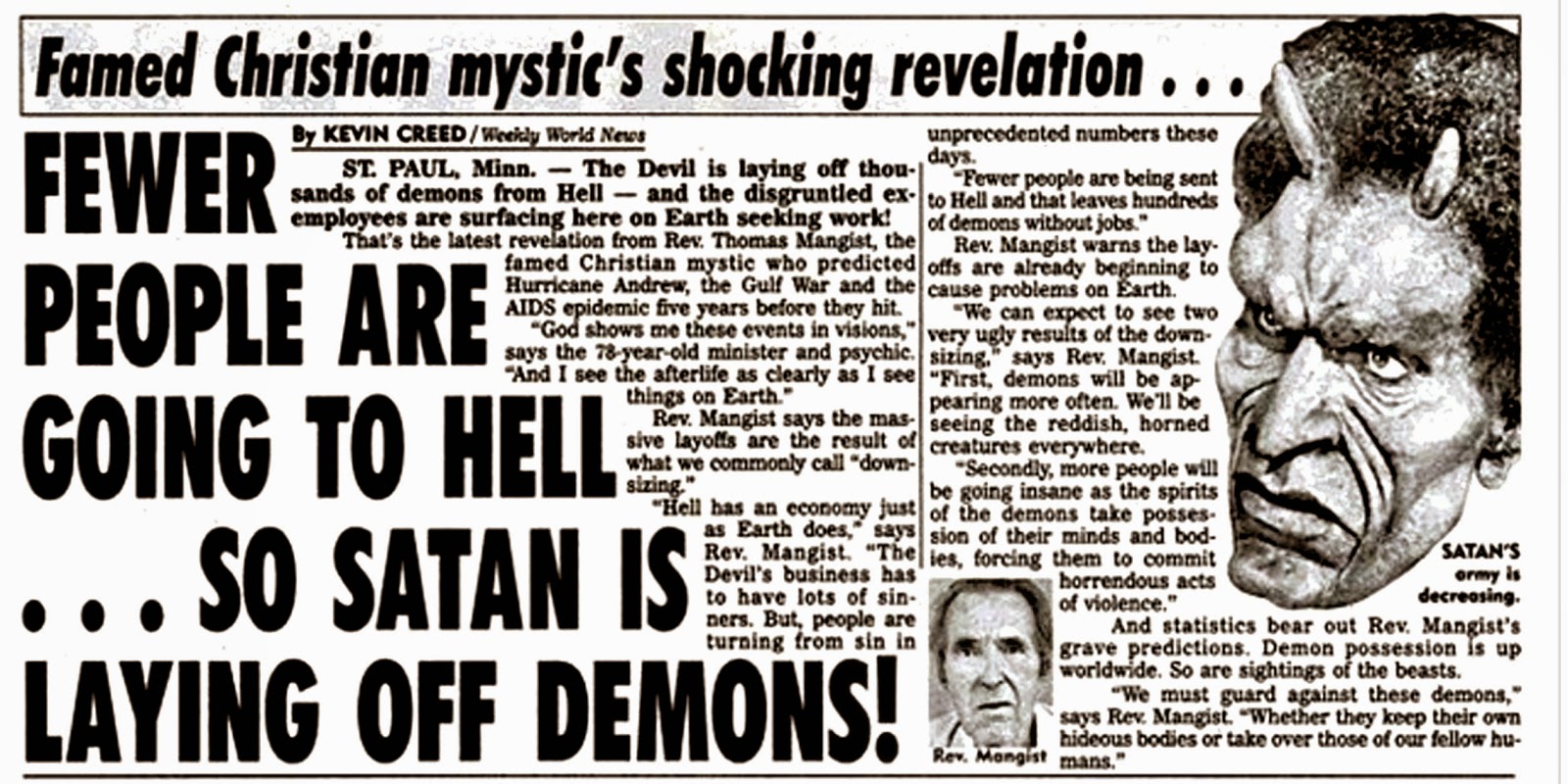by Nomad
An insane tabloid article from 1995 proclaims that Hell has released its laid-off work force. And very soon, says a mystic, the demons will be making the earthly realm their home.
Laughable? Yes, Ridiculous? Of course. But then again, let's look at what was happening in 1995.
I found this silly article in the November 21, 1995 issue of the now-defunct Weekly World News.

It's pretty standard fare for a tabloid, along with special diets and the latest travails of Bat Boy.
(Like the half-boy, half bat, the Reverend Magnist of St. Paul also appears to be a non-existent character. At least, there was no trace of him online.)
I like the part where it says:
"We can expect to see two very ugly results of downsizing [in Hell]... First, demons will be appearing more often. We'll be seeing the reddish horned creatures everywhere...Secondly, more people will be going insane as the spirits of the demons take possession of their minds and bodies.."Christian theology with a capitalistic spin. At the end, the mystic added that we all must be on guard against these demons on the loose "whether they keep their own hideous bodies or take over those of our fellow human."
But suppose just for a second (and no longer) we take this seriously. What was going on in 1995 to support the Reverend's notions?
Hmmm, let's see what a little research uncovers...
As one source reminds us, this was actually an important moment in the Republican party. Around this time, the Koch brothers set up a shell company called Triad Management which was used to funnel millions in secret money to help the Republican Party.



.jpg)